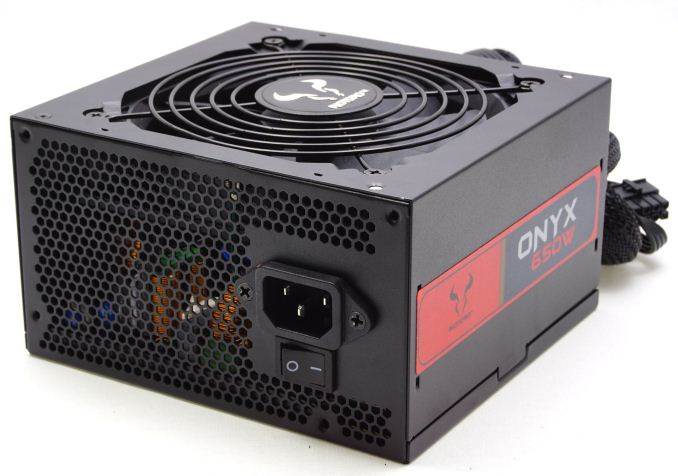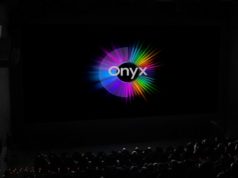Riotoro is a new player in the PC market, coming into business into 2015. The company was founded by ex-Corsair and ex-NVIDIA employees who possess the experience that is necessary for them to compete in today’s cutthroat markets. They are making slow, cautious moves towards new product releases, trying to maximize their revenue and, as a result, their growth. Their first entrance into the North American market was with the Prism CR1280, an RGB full tower case that we reviewed last April.
In this review we are having a look at Riotoro’s very first PSUs, the Onyx 650W and the Onyx 750W, which are used as proof of the company’s experience and cautiousness. These two PSUs are released in tandem with the 80Plus Gold certified Enigma 750W PSU.
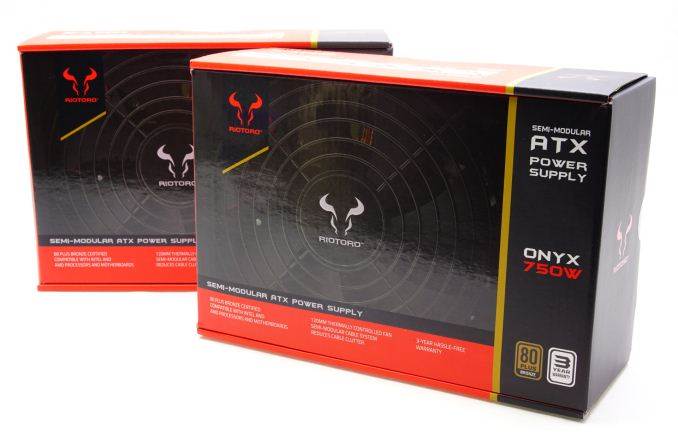
Instead of releasing a high output PSU that would be impressive but targeted at a very small fragment of the market, the two newly released Onyx units are more mainstream and are aiming to be financially competitive – not to take the market with brute force as with other brands. They are 80Plus Bronze certified and targeted towards casual gamers and/or advanced users, where the bulk of today’s home PC revenue comes from. For the time being there are only two versions of the Onyx, with a maximum output of 650W and 750W respectively.
Riotoro Onyx 650W Specifications
| Riotoro Onyx 650W Power specifications ( Rated @ 50 °C ) |
|||||
| AC INPUT | 100 – 240 VAC, 50 – 60 Hz | ||||
| RAIL | +3.3V | +5V | +12V | +5Vsb | -12V |
| MAX OUTPUT | 25A | 25A | 54A | 3A | 0.8A |
| 130W | 650W | 15W | 9.6W | ||
| TOTAL | 650W | ||||
Riotoro Onyx 750W Specifications
| Riotoro Onyx 750W Power specifications ( Rated @ 50 °C ) |
|||||
| AC INPUT | 100 – 240 VAC, 50 – 60 Hz | ||||
| RAIL | +3.3V | +5V | +12V | +5Vsb | -12V |
| MAX OUTPUT | 25A | 25A | 62.5A | 3A | 0.8A |
| 130W | 750W | 15W | 9.6W | ||
| TOTAL | 750W | ||||
We received the two Onyx PSUs into simple, effective cardboard boxes. The artwork on the boxes is simplistic, but all of the necessary information and specifications are printed onto the sides and rear of the box. Inside the box we found the PSUs simply wrapped in nylon bubble bags, without any polyethylene foam or extra cardboard packaging. While not the best shipping protection for a PSU, but it should be sufficient for the vast majority of cases.
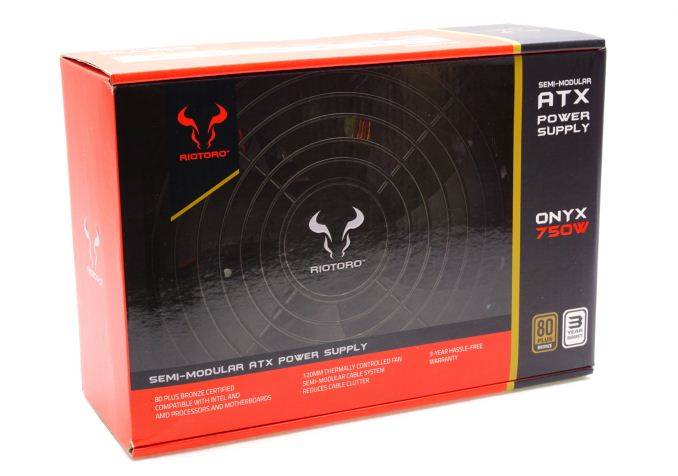
The items bundled with the Onyx PSUs are the absolute minimum that we expect: inside the box we only found the necessary AC power cable, a few cable straps, four black mounting screws and a basic user’s manual. Both units share the exact same bundle, only the manual itself and the number of supplied modular cables differ.

| Connector | Onyx 650W | Onyx 750W |
| ATX 24 Pin | 1 | 1 |
| EPS 4+4 Pin | 1 | 1 |
| EPS 8 Pin | – | – |
| PCI-E 6+2 Pin | 2 | 4 |
| PCI-E 8 Pin | – | – |
| SATA | 6 | 9 |
| Molex | 3 | 6 |
| Floppy | 1 | 1 |
The Riotoro Onyx PSUs are semi-modular, with the ATX and EPS cables hardwired onto the units, with the rest of the connectors on removable cables. All of the wires and connectors, including those of the hardwired cables, are black. The ATX cable is wrapped into black nylon sleeving, while the rest of the cables are “flat” ribbon-like cables. The 750W version has two extra PCI Express connectors, plus extra SATA and Molex connectors. Technically, the power rating difference does not really justify such a vast difference on the number of connectors, suggesting that Riotoro simply wanted to differentiate the target group of their two models.
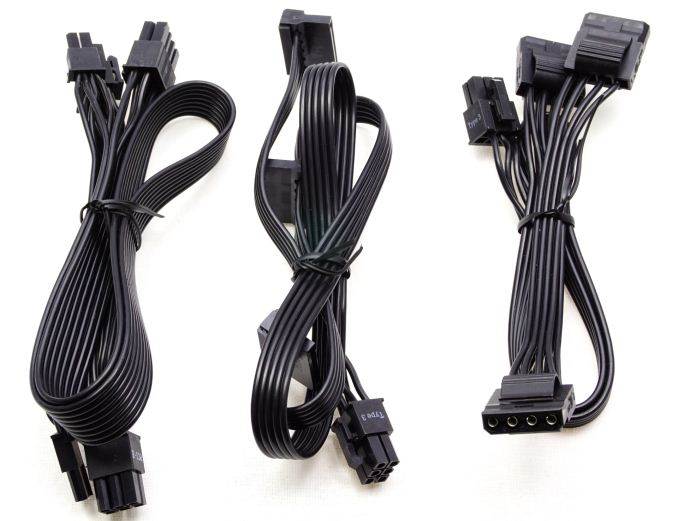
We should start by mentioning that, with the exception of the stickers and one extra connector at the front of the 750W model, there are no physical differences between the 650W and the 750W version of the Onyx. Externally, the Riotoro Onyx is a simple-looking PSU. The chassis has been sprayed with a matte black paint and the finish is good, but the paint itself is highly prone to fingermarks.
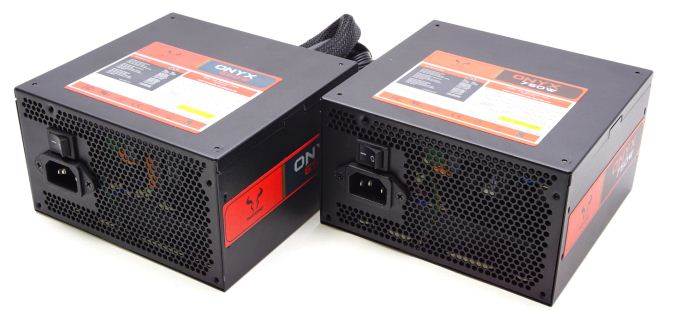
Stickers with the company logo, the series and the power rating of the PSUs can be found on the sides of the chassis. One large sticker with the electrical certifications and specifications of the PSUs take up most of the top. A metallic round badge with the company logo decorates the center of the finger guard, right above the fan’s engine.

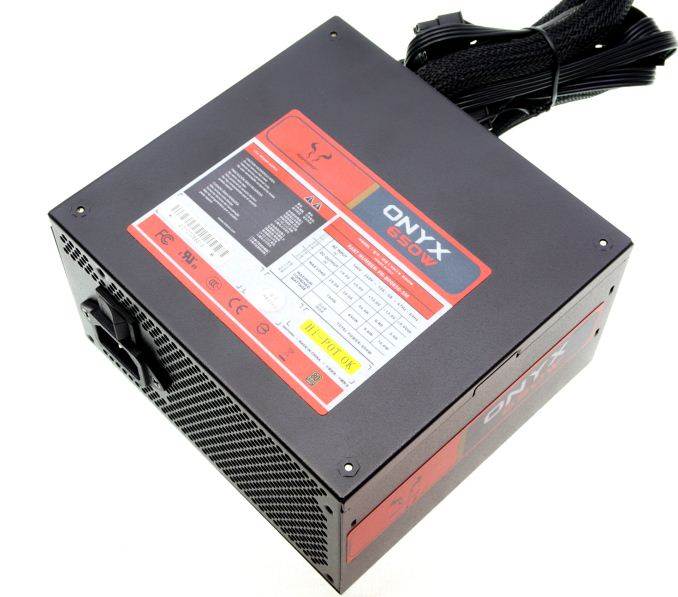
The front side of the PSU is mostly plain, with the connectors for the modular cables taking about a third of it. It can be noticed that the 650W version has one connector less than the 750W version, which is meant for the extra Molex or SATA cable. Note that both units have two PCI Express cable connectors, but the 650W version offers only two PCI Express 6+2 pin connectors instead of four.

The similarities of the two PSUs are internal as well, with both units using exactly the same fan for cooling. It is the Yate Loon Electronics D12SM-12 fan, a simple 120 mm model with a sleeve bearing engine. These fans tend to be relatively quiet but are not specifically reputed for their longevity.

Both of the units are based on exactly the same platform, and the OEM behind it is the Chinese company ‘Great Wall’. Great Wall is not a regular manufacturer into the North American and European markets, but a few companies have entrusted their middle range units to them, including OCZ and Corsair. Since some of Riotoro’s employees come from Corsair, it is no surprise that they approached Great Wall to be the OEM of their own units.
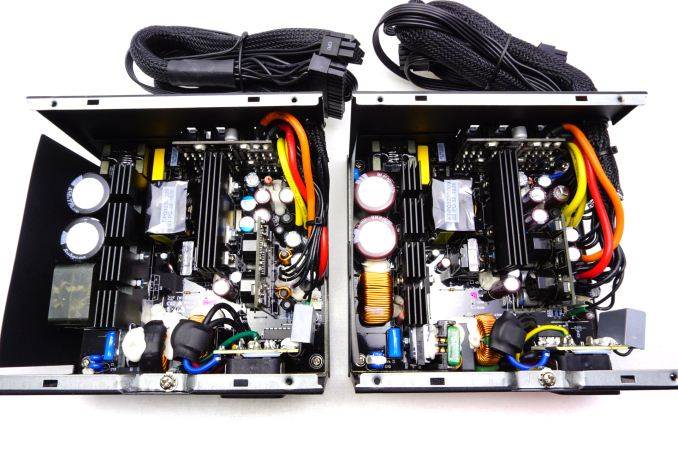
Other than the ratings of the used components, there are no vital differences between the two units. The main difference is the size of the passive PFC components, the filtering inductor and the two capacitors: where the 650W model employs two Nippon Chemi-Con 450V/180μF capacitors, the 750W model uses two Rubycon 450V/220μF capacitors. On the secondary side both units are using a mix of Rubycon and Nippon Chemi-Con electrolytic capacitors. Nippon Chemi-Con supplies all of the solid-state capacitors as well.
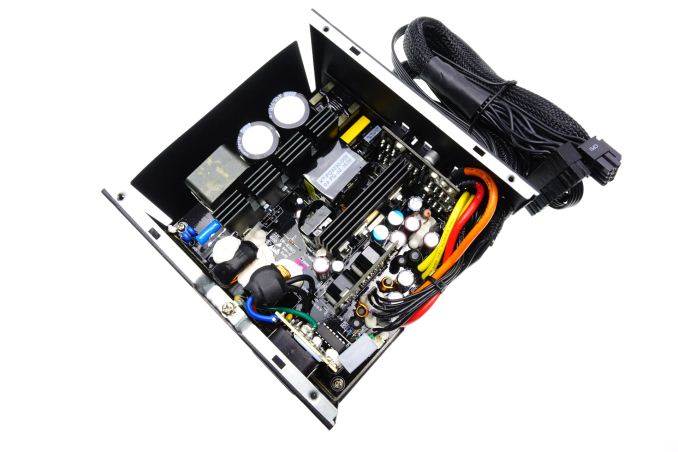

Riotoro Onyx 750W – Internal View
The platform is a relatively simple design, with a half-bridge primary inversion on the primary side of the transformer. On the secondary we can clearly see the DC-to-DC converters for the minor rails. These are not cutting-edge technologies but, taking into account the quality of the used components as well, the Onyx units should be getting a better efficiency certification, suggesting improper optimization on the OEM’s behalf. The heatsinks are of a reasonably large size, considering the efficiency and power ratings.

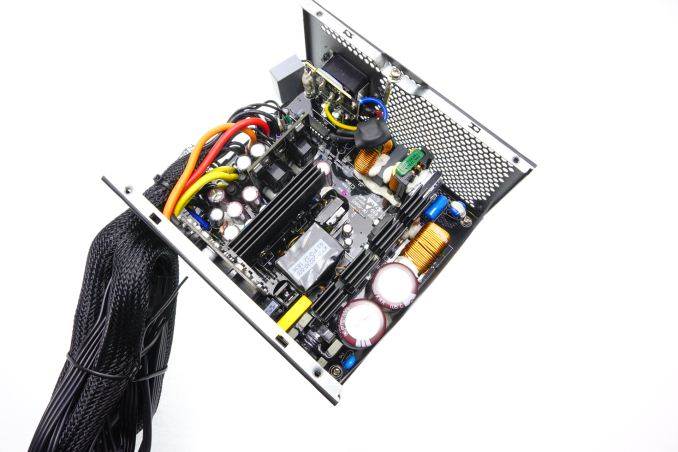
Riotoro Onyx 650W – Internal View
For the testing of PSUs, we are using high precision electronic loads with a maximum power draw of 2700 Watts, a Rigol DS5042M 40 MHz oscilloscope, an Extech 380803 power analyzer, two high precision UNI-T UT-325 digital thermometers, an Extech HD600 SPL meter, a self-designed hotbox and various other bits and parts. For a thorough explanation of our testing methodology and more details on our equipment, please refer to our How We Test PSUs – 2014 Pipeline post.
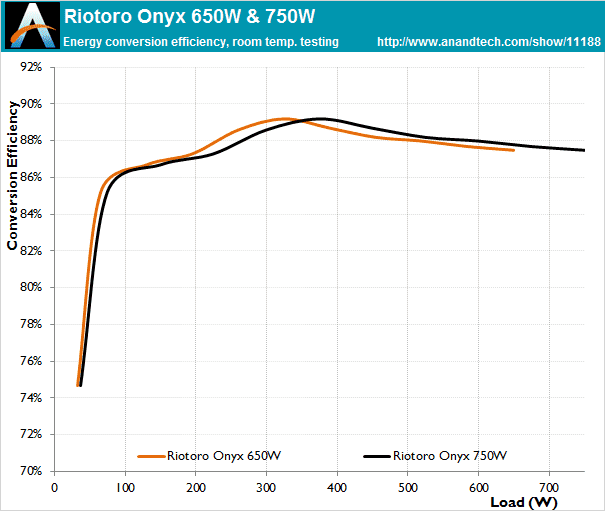
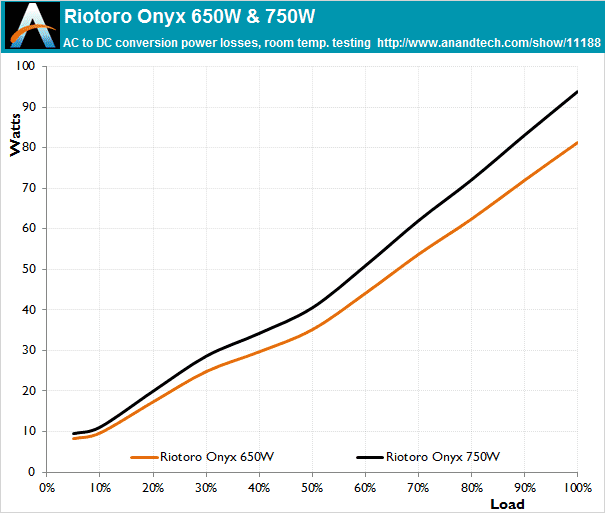
As expected, the performance of the 650W and the 750W versions of the Onyx is very similar, with the performance curves only slightly leaning to the right of the power axis for the higher wattage model. Both units have exactly the same nominal load range (20%-100%) efficiency, which is 88%. The energy conversion efficiency is excellent for 80Plus Bronze certified units, with remarkably high efficiency readings at lower and higher loads, but the peak efficiency of the units was not high enough to warrant them a better efficiency rating.
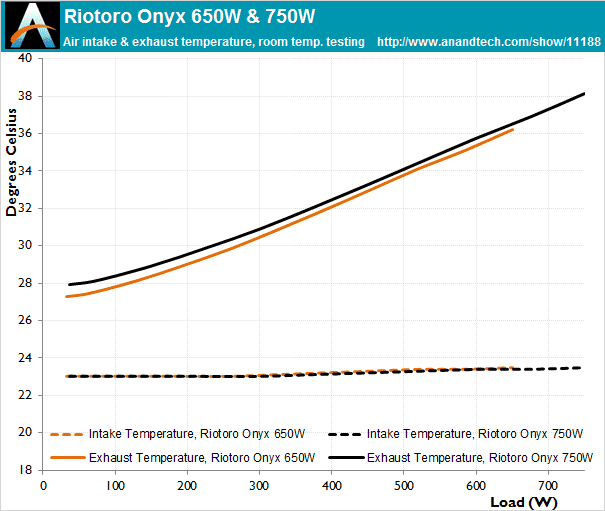
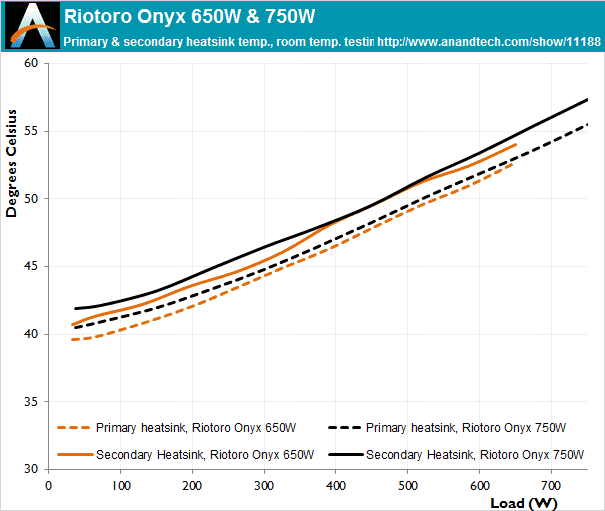
The internal operating temperatures of the Riotoro Onyx PSUs are very reasonable, considering the power output and efficiency rating of the units. Their thermal control appears to be very simplistic, with the fans adjusting their speed according to the internal temperature of the units. The fan of the 650W model displays a “ladder” behavior, increasing its speed in steps in relation to the load, where the fan’s speed in the 750W model increases slightly more linearly. This is of no practical consequence to the users though as the sound pressure levels are about the same for an equal power load.

Great Wall’s platform overall delivers a good power quality. As a matter of fact, the platform’s overall performance seems to have improved significantly since the last time we reviewed a similar unit, indicating that the OEM is candidly trying to improve.
| Riotoro Onyx 650W – Main Output | ||||||||
| Load (Watts) | 132.07 W | 329.14 W | 490.17 W | 652.48 W | ||||
| Load (Percent) | 20.32% | 50.64% | 75.41% | 100.38% | ||||
| Amperes | Volts | Amperes | Volts | Amperes | Volts | Amperes | Volts | |
| 3.3 V | 2.16 | 3.39 | 5.4 | 3.38 | 8.11 | 3.37 | 10.81 | 3.35 |
| 5 V | 2.16 | 5.13 | 5.4 | 5.12 | 8.11 | 5.08 | 10.81 | 5.05 |
| 12 V | 9.34 | 12.17 | 23.35 | 12.13 | 35.02 | 12.04 | 46.69 | 12.03 |
| Line | Regulation (20% to 100% load) |
Voltage Ripple (mV) | |||||
| 20% Load | 50% Load | 75% Load | 100% Load | CL1 12V |
CL2 3.3V + 5V |
||
| 3.3V | 1.4% | 8 | 12 | 16 | 24 | 10 | 22 |
| 5V | 1.5% | 8 | 16 | 20 | 30 | 16 | 26 |
| 12V | 1.2% | 16 | 30 | 44 | 52 | 68 | 26 |
We can see that the voltage regulation is significantly improved and very good for PSUs of this class and power range, at 1.2% on the 12V line and lower than 1.5% on the minor lines. The power quality readings are not going to break any performance records, but a maximum voltage ripple of 52 mV and 54 mV on the 12V line of the 650W and 750W models respectively is good, less than half that of the recommended design limit. Both units appear to be a little stressed when heavily cross loaded, with abnormally high ripple appearing on the 12V line, but the reading still do not go anywhere near the 120 mV design limit.
| Riotoro Onyx 750W – Main… |
